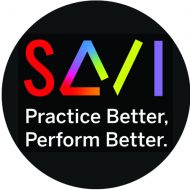When you’re starting your training, it’s understandable that you might be overwhelmed by the apparently infinite variety of the craft of singing-acting. So many songs! So many choices! So many skills to juggle! Where do I start? Who should I imitate? It’s a prospect as daunting as it is exciting.
My works as a teacher of singing-acting has been an ongoing attempt to formulate its ABC, a finite set of fundamental components that can be learned and then be recombined in unlimited numbers of permutations to create a vast array of artistic and expressive effects.
Nearly a century ago, Constantin Stanislavski, the early-20th Century actor and director whose pioneering work established the foundations of modern acting training, undertook a similar task. In his studio, he spoke of his desire to establish a fundamental grammar, an ABC of acting, and for a model for his work, he looked enviously at the world of music, where the language of pitch, harmony and rhythm had been clearly defined by generations of pedagogues. Of course, Stanislavski went on to develop a “system” (a modest man, he always preferred the small “s” and thought a capital-S “System” sounded grandiose) of actor training, and his systematic approach revolutionized how actors would be changes for the next hundred years.
Not to sound grandiose, but I think there’s a similar opportunity now to establish an ABC for singing acting, to articulate its basic principles in a way that will give you, the aspiring student or singing-actor seeking to improve your craft, the chance to improve your work through techniques that can be clearly identified, practiced and applied systematically. I call my system the SAVI System of Singer-Actor Training.
Perhaps you’ve seen David Mamet’s play Glengarry Glen Ross. In it, the character Blake (memorably played by Alec Baldwin in the 1992 film adaptation of the play) berates the salesmen in his real estate office with the slogan, “Always Be Closing.” “A – Always! B – Be! C – Closing!” In the spirit of David Mamet (a chap with spirit to spare), I’d like to begin with an ABC for singing acting, to wit:
ALWAYS BE CREATING
The work of the singing actor is not just interpretative, though there’s plenty of temptation to think of it that way. In this perspective, the songwriter(s) have done all the creative heavy lifting and your job is simply to be a conduit for their great work. In other words, sing the song and your work is done, period, end of story.
Except – it doesn’t work that way.
First of all, who wants to be a conduit? A tube? Where’s the excitement in that? The singing actors I work with want to be artists, they want to make their own contributions. Nobody earns recognition for being a passive conduit, something the song passes through; an artist craves recognition for his contributions. So what are you going to contribute? What are you going to create?
Pick any song and line up three YouTube videos of performances of that song. The song is the same, so what’s different? That’s the creative contribution, the artistry of the performer. It’s your job to learn to create a performance, using the song as a kind of skeleton or armature. Your job is to put the flesh on the skeleton of the song, mold the clay on the armature to make a fully-formed creation.
ALWAYS BE CHOOSING
You create by making choices. What am I going to do? What am I going to add? What vocal sound, facial expression, gesture, inflection, detail can I contribute that will add clarity and impact to this moment of the song? And the next moment?
The art of singing-acting is the art of making choices. Over the coming chapters, we’ll study a variety of opportunities for the singing actor to make choices. Your ability to make clear, powerful, appropriate choices can be improved through patient, purposeful practice.
And finally,
ALWAYS BE CHANGING
Songs unfold over time, and the art of singing acting involves making a series of choices. Moments of change – the moments when you make a transition from one choice to the next – are the most important moments in the life of a song. The SAVI singing actor is skilled at knowing WHEN to change and WHAT to change in order to keep the song unfolding as a living, dynamic theatrical experience.
I think the word “always” in this phrase might be a little misleading. I don’t mean to say “constantly,” since constant change would result in random, chaotic behavior. It would more precise to say, “Every single phrase presents the opportunity for change, an opportunity to create new choices that reflect the dramatic event as it is unfolding in the PRESENT MOMENT.”
In the SAVI System, it is AXIOMATIC that:
“THE SINGING ACTOR CREATES BEHAVIOR THAT COMMUNICATES THE DRAMATIC EVENT PHRASE BY PHRASE.”
Your job is to be constantly creating, choosing behavior that conveys the essence of each moment, and changing that behavior whenever the song requires it, crafting a varied sequence of specific individual choices that unfold in coordination with the musical event of the song.
“Simple? Simple? Simple as ABC!” That’s the chant of J. Bowden Hapgood, the mad Pied Piper who invades Hooperville in Stephen Sondheim and Arthur Laurents’ 1964 musical “Anyone Can Whistle.” Of course, as that song spins out of control, it becomes clear that nothing is as simple as it seems, and God knows there’s plenty of complexity that lies ahead of the would-be artist. But my goal in these pages is to try to make things simple, and to create an ABC that can be grasped and mastered efficiently.
